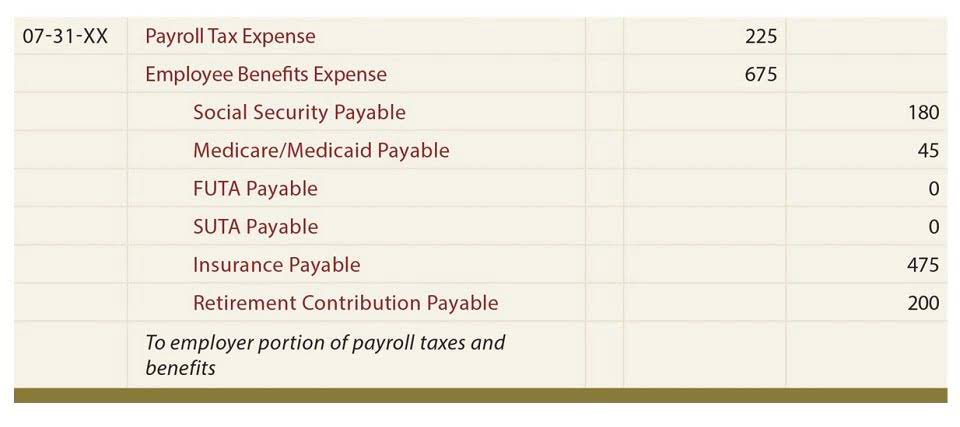
Once you know how valuable your assets currently are, it’s important to know how valuable they will be at any given point in the future. It’s important to use a future value calculator in order to get around the problem of the fluctuating value of money. This means that the current value of the $10,000 expected in five years is $7,835.26, considering the time value of money and the 5% discount rate. We can combine equations (1) and (2) to have a present value equation that includes both a future value lump sum and an annuity.
- The present value of a single sum tells us how much an amount to be transacted in the future is worth today.
- Regarding the use of a financial calculator, while all are similar, the user manual or a quick internet search will provide specific directions for each financial calculator.
- The core premise of the present value theory is based on the time value of money (TVM), which states that a dollar today is worth more than a dollar received in the future.
- Net present value is considered a standard way of making these investment decisions.
- Try to calculate the annual interest rate on this investment if interest is compounded monthly.
- To calculate the present value of a stream of future cash flows you would repeat the formula for each cash flow and then total them.
Example 2 – Calculating the present value
Understanding PV is essential for making informed decisions about the allocation of resources and the evaluation of investment opportunities. It applies compound interest, which means that interest increases exponentially over subsequent periods. Click enter on your keyboard and you’ll see the value returned is -19,588. Remove the negative symbol in front of it and you get 19,588 or $19,588, as we got with our other formulas. 11 Financial is a registered investment adviser located in Lufkin, Texas. 11 Financial may only transact business in those states in which it is registered, or qualifies for an exemption or exclusion from registration requirements.
Do you own a business?

Finance Strategists has an advertising relationship with some of the companies included on this website. We may earn a commission when you click the present value of a single future sum on a link or make a purchase through the links on our site. All of our content is based on objective analysis, and the opinions are our own.
Calculating Present Value
It represents your forgone rate of return if you chose to accept an amount in the future vs. the same amount today. The discount rate is highly subjective because it’s simply the rate of return you might expect to receive if you invested today’s dollars for a period of time, which can only be estimated. When referring to present value, the lump sum return occurs at the end of a period. A business must determine if this delayed repayment, with interest, is worth the same as, more than, or less than the initial investment cost. If the deferred payment is more than the initial investment, the company would consider an investment. The formula used to calculate the present value (PV) divides the future value of a future cash flow by one plus the discount rate raised to the number of periods, as shown below.
In other words, the $500 tax obligation has a future value of $525 when factoring in the liability growth due to the 5% penalty. If a taxpayer knows they have filed their return late and are subject to the 5% penalty, that taxpayer can easily calculate the future value of their owed taxes based on the imposed growth rate of their fee. This Present Value Calculator makes the math easy by converting any future lump sum into today’s dollars so that you have a realistic idea of the value received.
- As with the future value tables, choosing the correct table to use is critical for accurate determination of the present value.
- The concept of future value is often closely tied to the concept of present value.
- You must always think about future money in present value terms so that you avoid unrealistic optimism and can make apples-to-apples comparisons between investment alternatives.
- You put $10,000 into an ivestment account earning 6.25% per year compounded monthly.
- PV is used to evaluate and compare different investment opportunities by calculating the present value of their expected future cash flows.
- If we assume that the home sold for $16,500 in 1948 and the price of the home in 2019 was about $500,000, that’s an annual appreciation rate of almost 5%.
- This information helps individuals determine how much they need to save and invest to achieve their desired retirement income.
In other words, assuming the same investment assumptions, $1,050 has the present value of $1,000 today. Future value (FV) is the value of a current asset at a future date based on an assumed growth rate. Investors and financial planners use it to estimate how much an investment today will be worth in the future. What that means is the discounted present value of a $10,000 lump sum payment in 5 years is roughly equal to $7,129.86 today at a discount rate of 7%. The present value (PV) formula discounts the future value (FV) of a cash flow received in the future to the estimated amount it would be worth today given its specific risk profile. Remember that you can always check your results with our future value calculator – it works in each direction, depending on the values you provide.
Compounded Annual Interest
- You can use this future value calculator to determine how much your investment will be worth at some point in the future due to accumulated interest and potential cash flows.
- Finance Strategists has an advertising relationship with some of the companies included on this website.
- This means that the future value problem involves compounding while present value problems involve discounting.
- Below, we can see what the next five months would cost you, in terms of present value, assuming you kept your money in an account earning 5% interest.
- Starting off, the cash flow in Year 1 is $1,000, and the growth rate assumptions are shown below, along with the forecasted amounts.
- Our goal is to deliver the most understandable and comprehensive explanations of financial topics using simple writing complemented by helpful graphics and animation videos.
PV calculations rely on accurate estimates of future cash flows, which can be difficult to predict. Inaccurate cash flow estimates can lead to incorrect present values, which may result in suboptimal investment decisions. Present Value is a financial concept that represents the current worth of a sum of money or a series of cash flows expected to be received in the future.

Determining the Discount Rate
It is used both independently in a various areas of finance to discount future values for business analysis, but it is also used as a component of other financial formulas. This present value calculator can be used to calculate the present value of a certain amount of money in the future or periodical annuity payments. Using those assumptions, we arrive at a PV of $7,972 for the $10,000 future cash flow in two years.
PV Calculation Examples
Present value calculations are tied closely to other formulas, such as the present value of annuity. Annuity denotes a series of equal payments or receipts, which we have to pay at even intervals, for example, rental payments or loans. If you find this topic interesting, you may also be interested in our future value calculator, or if you would like to calculate the rate of return, you can apply our discount rate calculator. Keep reading to find out how to work out the present value and what’s the equation for it. Future value, on the other hand, is a measure of how much a series of regular payments will be worth at some point in the future, given a set interest rate.
Lump Sums and Annuities
If you’re making regular payments on a mortgage, for example, calculating the future value can help you determine the total cost of the loan. For example, you could use this formula to calculate the PV of your future rent payments as specified in your lease. Below, we can see what the next five months would cost you, in terms of present value, assuming you kept your money in an account earning 5% interest.
